14 Types of Ivy Plants to Bring Calm Indoors or Outside
Author: Jen Worst | Editor: Omar Alonso
Review & Research: Jen Worst & Chris Miller
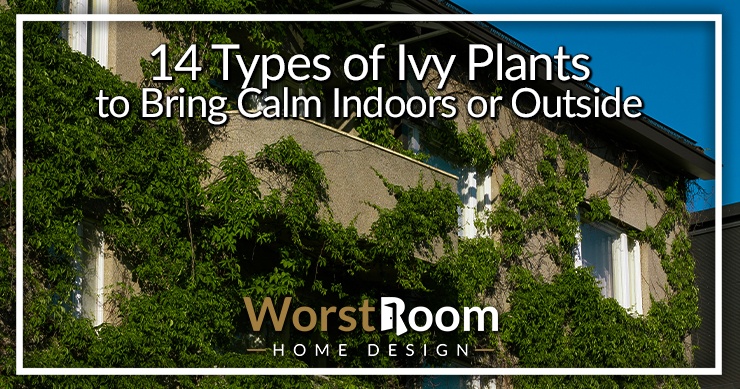
If you're looking for an easy-growing plant for both indoors and outdoors, any of the types of ivy are ideal plants to grow pretty much anywhere. This group of green, leafy plants will climb up your exterior walls and fences, fill the landscape, and beautify the interior corners of your room.
Nowadays, a large group of climbing plants is known as ivy, including some invasive species. However, not all of them are real ivy plants, and you need the differences between various ivy plants whether you're a hobby botanist or a typical gardener.
So here, we will discuss the different types of ivy and their unique features so that you can ultimately decide which species is perfect for adorning your garden. Let's dive right in.
14 Types of Ivy
The ivy plants belong to the genus Hedera and the family Araliaceae. Because of their widespread habitat, ivy plants are found around the globe. However, the genus Hedera includes only 12 to 15 species of creeping and climbing evergreen plants.
Below we have listed the most common ivy varieties along with their important characteristics and growth habits. Have a look...
English Ivy
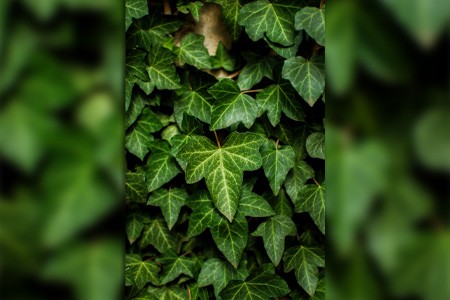
You have probably seen this type of ivy in parks, around office buildings, and beside the roads. This evergreen species is a vigorous grower and sometimes climbs up to 100 feet or 30m long.
Since this species of ivy is recognized as invasive (so much so it's considered as an ecological threat to all forested and open areas), you'll have to visit your local extension office before planting the fast-growing English ivy vines.
Just like typical ivy plant types, this one also features broad, 5-lobed, dark green leaves. The leaves have cream edges and they can reach 4 inches in length.
Although the natural English ivy is more suitable for outdoors, some cultivars are more compact with tightly-spaced, smaller leaves that grow well in indoor containers. Some cultivars require bright daylight, while some grow well in shady areas.
This flowering ivy grows flowers from late summer to fall. Hence, the plant will attract bees and butterflies to your garden for pollination. You can grow the English ivy types to cover your old fences, walls, and grounds.
Persian Ivy
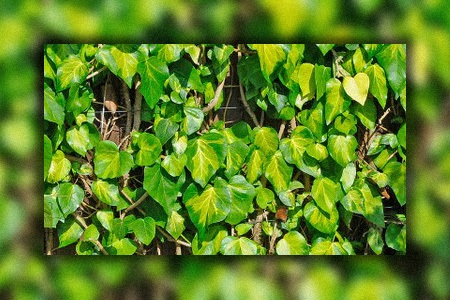
If you want to fill the landscape of your yard in the shortest possible time, the fastest-growing Persian ivy can be your best bet. This vine can reach up to 40 feet long and 3-4 feet wide outdoors. You can easily identify this species from its large, shiny, heart-shaped leaves.
In fact, the species is commonly called 'Bullock’s Heart' because of the 6 to 10 inches long leaves. This flowering breed is also known for its fall-blooming white flowers that easily attract pollinating bees.
Although the plant prefers slightly acidic soil, it can grow well in nearly all types of soil. Standard Persian ivy is a great choice for protecting your garden soil from erosion. Some subspecies can be trained to grow in trellis, containers, and pots.
Luckily, you can grow these types of ivy plants in any season. Plus, the Persian ivy leaves maintain their dark green color even during the winter season. My grandmother grows these around the base of her various types of fig trees to great effect.
Irish Ivy
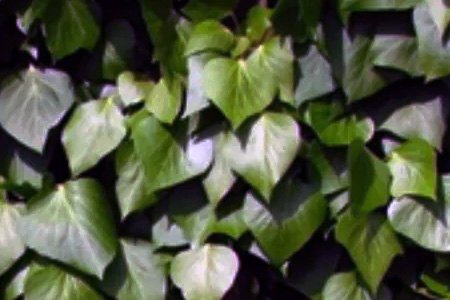
Although this species shares many similarities with the English ivy, you can easily identify the Irish ivy from its charming appearance. The distinguishing feature of this type is its large, light to dark green leaves that lack any cream edges and veins.
When you crush the leaves of this plant, they will emit a sweet smell. This vigorous spreader can grow up to 100 feet long and is considered invasive in many areas. Hence, you'll have to perform regular pruning to maintain the size of the plant.
You can grow this plant in both partial shade and bright sunlight. The plant prefers well-drained soil with a slightly alkaline pH. Thanks to its glossy green appearance, the Irish ivy is a great match for modern gardens.
Russian Ivy
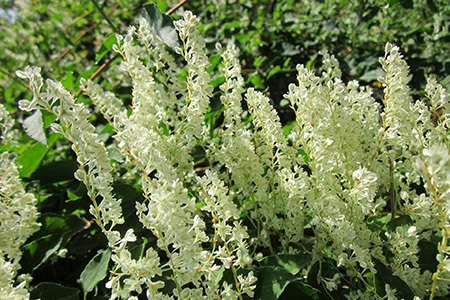
As the name suggests, this species is native to most Russian regions. The lanceolate green leaves of the Russian ivy (Fallopia baldschuanica) grow in opposing pairs. While the typical plants of this species feature bright green leaves with cream veins, some cultivars have long, dropping leaves with outer purple coloring and dark green veins in the center.
Unlike other ivy species, Russian ivy plant types don't tend to climb and crawl. Therefore, it can be a great option for covering your grounds and landscape. However, with proper support, this plant can reach up to 100 feet in length.
Russian ivy can grow in both hot and cold climates. All types of soils are suitable for growing the species. The plants give beautiful white flowers for attracting pollinating insects.
Needlepoint Ivy
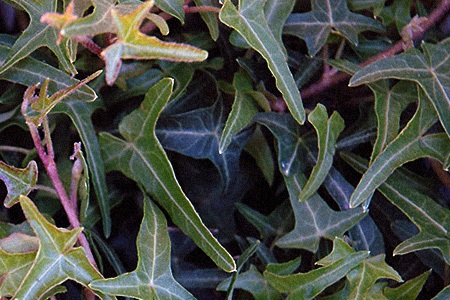
Among all the ivy species, this is probably the most unique-looking one. The 3 to 5 lobed leaves are long with tapering, thin, and pointed ends. Because of their angular texture, the leaves look like a five-fingered waving hand. The color of the leaves varies from jade green to dark emerald.
Unlike other varieties, the needlepoint ivy plants grow only 2 to 3 feet tall and 3 feet wide. So, you can grow this plant in hanging containers, baskets, and pots. Also, the plant can tolerate partial and full shade, making it an ideal choice for indoors.
As these types of ivy houseplant are relatively drought-tolerant, it also works well outdoors as wall climbers and ground covers. I once saw it in use in the various types of bouquets on the tables at a wedding and was amazed at how well it worked.
Algerian Ivy
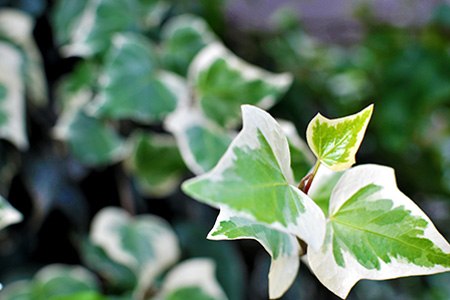
Native to the Canary Islands and North Africa, the Algerian ivy is a unique species to grow in warm-weather climates. The dark green leaves of this plant can be heart-shaped or triangular.
Some varieties of Algerian ivy feature green-splotched leaves and creamy white borders. The size of the leaves is usually between 4 to 6 inches.
Since this ivy species grows well outdoors, you have to plant it in a place where it receives bright, indirect sunlight. Also, the plant requires well-drained, rich, and evenly moist soil to grow up properly.
These ivy types are a good climber, and it will cover your walls and living fences without any special support. To keep the growth and size under control, you'll have to prune the plant regularly.
Japanese Ivy
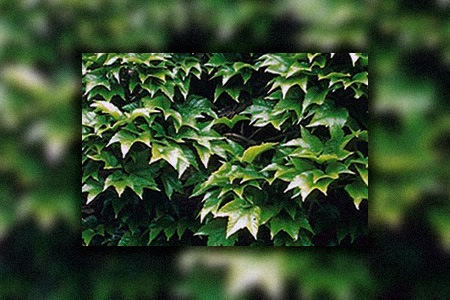
Commonly known as Songoak, the Japanese ivy is native to East Asia. While most ivy plants are grown for climbing fences (check out these fence ideas) and covering the ground, this species is valued for its ornamental features. The plants naturally grow on tree trunks, rocky slopes, and cloud forests.
As the plant prefers partial to full shade, it's a good choice as an indoor plant. However, this climber species can grow up to 30 feet tall and require regular pruning for growing in containers.
You can easily identify the Japanese ivy from its large, glossy, deep green leaves with distinct white veins. The plants are also recognized by their small umbrella-shaped flowers and purple-black berry-like fruits.
Boston Ivy
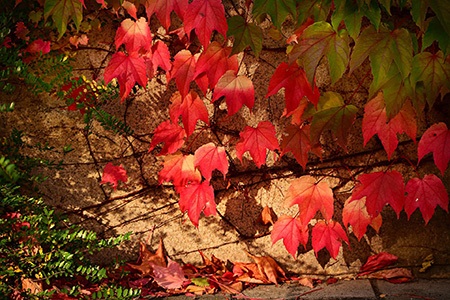
Also known as Woodbine, the Boston ivy is a flowering woody vine. Because of its large color-changing leaves, the plant is planted in public spaces and front yards to give shade and cover the walls.
Most ivy plants are evergreen, maintaining their lush color throughout the year. I had a friend growing this up the brick wall of her apartment's balcony at one point. I thought these were great apartment garden ideas but also I think she ended up getting in trouble because it does damage the brick a little when removed, or at least leaves behind residue.
However, Boston types of ivy are different as the leaves of these plants shed off during winter. As the seasons pass by, the color of the leaves changes from deep green to orange, red, and deep maroon during the fall.
You can easily identify this plant from its 3-pointed light green leaves that grow from 2 to 8 inches across. Boston ivy plants are drought-tolerant and grow well in full sun. If you want an ornamental plant to enhance the beauty of your front yard, Boston ivy will be a great choice.
Glacier Ivy
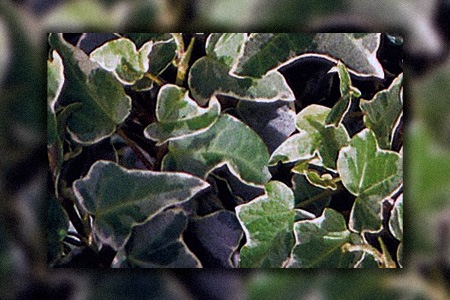
This plant with its beautiful tri-color foliage is suitable for both indoor and outdoor growing. The leaves of Glacier ivy can be gray-green or dark green with a white margin.
Because of this combination of green and white, the plants work great as ground covers, providing a backdrop for your colorful flowers and plants.
Although the plant can survive in shady conditions, it requires 6 hours of sunlight per day to reach its full height. Keep in mind that some parts of the Glacier ivy plant are known to be toxic.
Hence, you need to keep your pets away from these ivy plant types. Under ideal conditions, a Glacier ivy plant can live for 30 years.
Himalayan Ivy
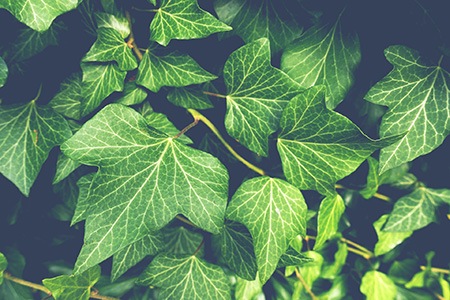
A variant of English ivy, the Himalayan ivy, is native to Asian countries. Each vine of this plant features elongated triangular leaves growing up to 6 inches long.
However, some Himalayan ivy has smaller leaves that grow only 1-inch long. The plant can survive both partial sun and full shade.
Although the plant prefers slightly acidic soil, it can easily survive in any type of soil ranging from basic to acidic. You can easily identify these types of ivy plants by its yellow flowering blooms and green leaves with light green or white vein markings.
Ivalace Ivy
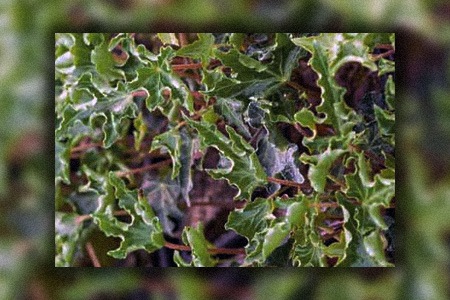
Ivalace ivy is one of the English ivy plant types. They're popular as ivy houseplants due to the unique shape and gloss of the leaves. The leaves have curly, ruffled edges that take on a cupped shape, and they develop a shine to them as they mature.
One plant of Ivalace will grow to a maximum of around four feet wide and three feet high. With proper planting distances you could also make it into a ground cover, where it will appreciate the full sunlight, or at least partial exposure.
North African Ivy
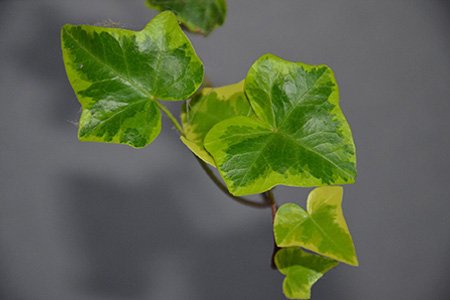
Hailing from the area it's named after, North African ivy types prefer full sunlight and won't thrive well in colder areas. If you grow them in planters, you can always move them indoors during the coldest parts of the season. Just keep their soil moist and you'll have an easy time with it.
The leaves of North African ivy kinds take on a dark green appearance and have a lobed shape where the outer portions will bow downward towards the bottom of the leaf. Their feel is somewhat like leather and this helps make them a bit more durable.
German Ivy
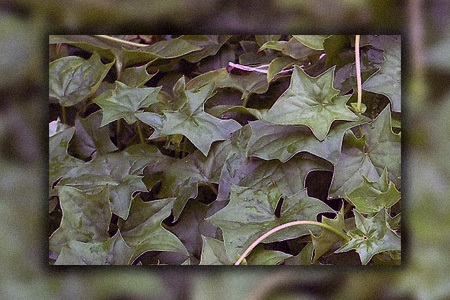
Though these ivy types are called German ivy, they're found on the coasts of California in the capes, which is why many call it Cape ivy as well. It will make its way further inland into moist areas like forests, rivulets, and wetlands.
That should tell you all you need to know about the soil conditions they prefer. It's not just a preference, either. They simply will not thrive or even survive in dry environments. But if you have a dry bout of weather, don't worry. When provided water again they'll revive themselves.
Swedish Ivy
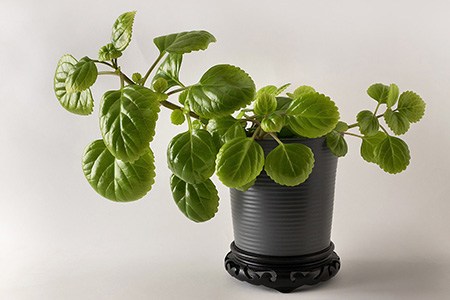
You opt for Swedish ivy when you want a plant that won't grow too tall, though they will send out trailing vines that can climb as high as three feet. You'll want to grow them in some types of planters with shade in well-drained soil, but you'll need to keep that soil moist.
If you do everything right, you'll enjoy watching these ivy plant types' stems grow stiffly upward, sprouting out beautiful light to medium green leaves. And then come the vines that will go seeking anything to grab on to. They work great in hanging baskets, if that's your thing.
Other Types of Ivy to Explore
While we can't list, picture, and describe every single one of the different types of ivy out there, we can reel off a quick list of names for you if you want even more variety as a die-hard ivy fan. Check out the following next:
- Anne Marie Ivy
- Tripod Ivy
- Golden Curl Ivy
- Goldchild Ivy
- Nepalese Ivy
- Aloma Ivy
- Shamrock Ivy
- Adam Ivy
- Canarian Ivy
- Manda's Crested Ivy
- Sulphur Heart Ivy
- Chicago Ivy
- Duckfoot Ivy
- Angel Snow Ivy
- Buttercup Ivy
- Asterisk Ivy
- Big Shot Ivy
The list could go on and on but you start getting into more obscure ivy types where the differences are hardly noticeable.
Types of Ivy to Bring Life to Your Home
Boston ivy will be a good choice as a woody plant that provides shade and shifts the color of its leaves from dark green to beautiful red, though if you're looking for an outdoor ivy variety to cover your old walls and fences, English ivy will do the work pretty well.
So there you have the most popular yet different types of ivy for your home garden, living room, and front yard. We hope you'll continue your exploration and create the perfect environment in and around your home.



